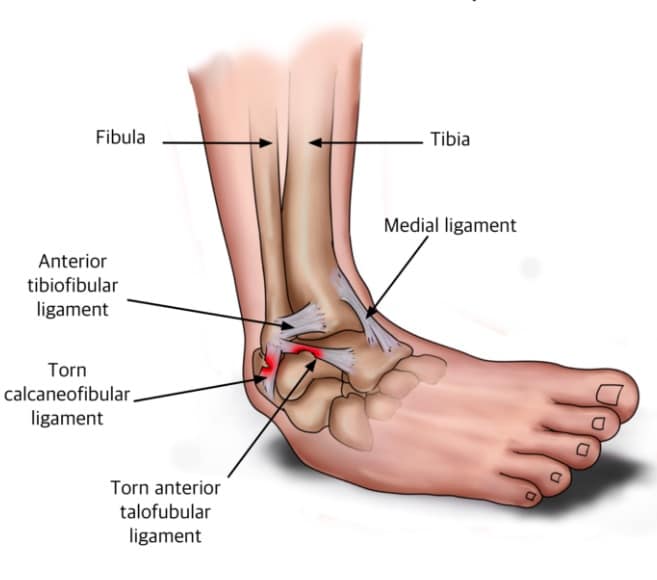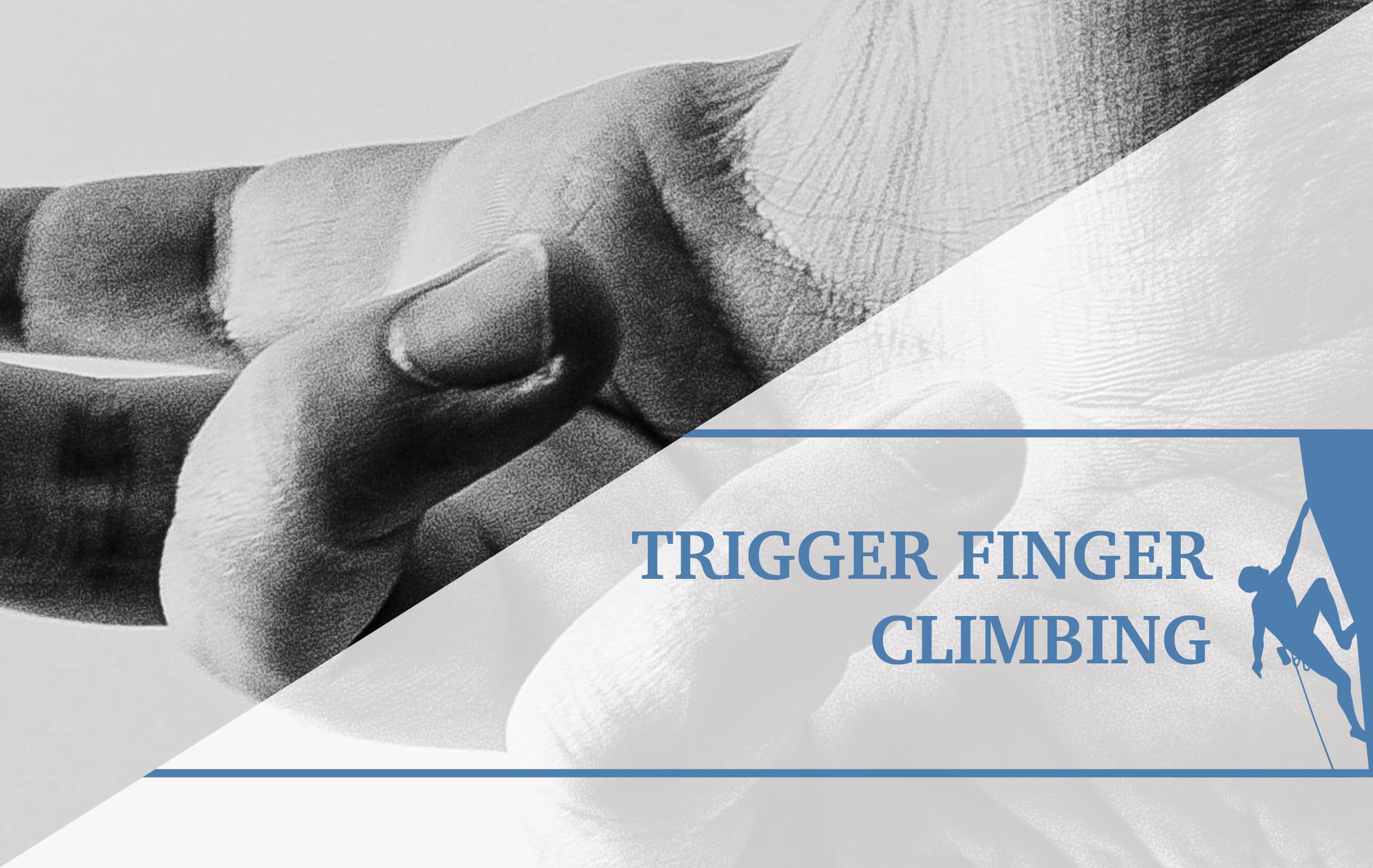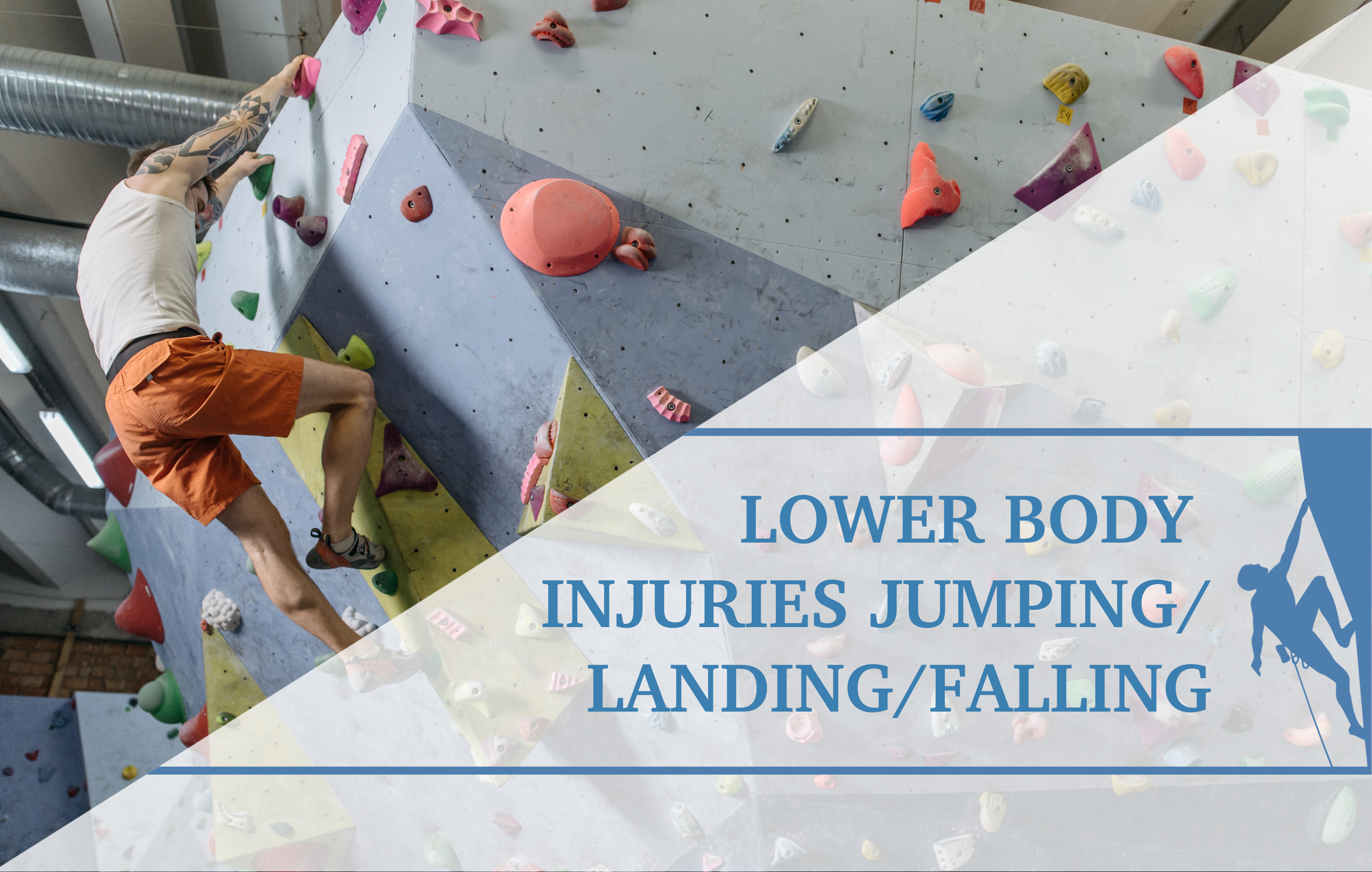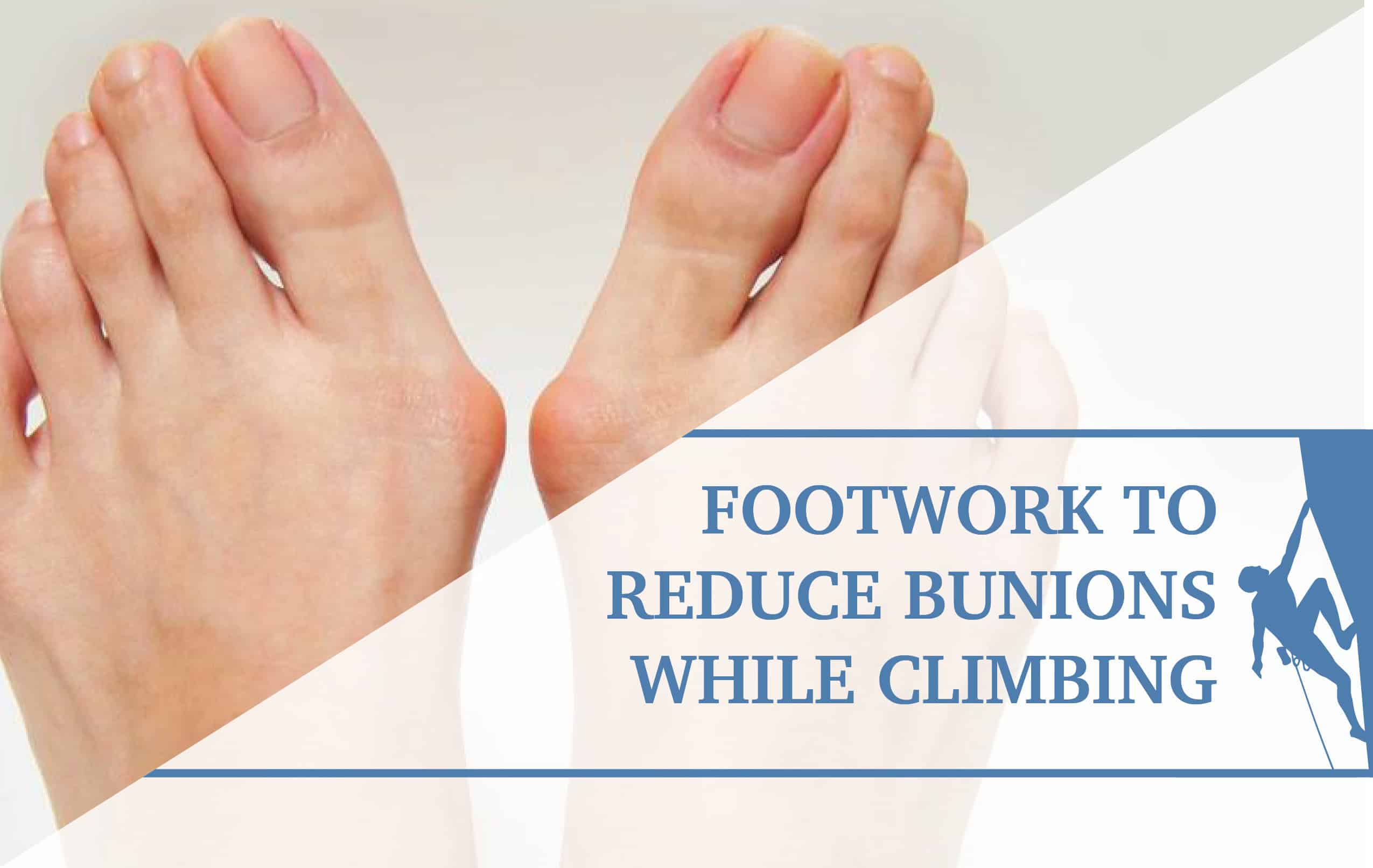Improving Ankle Stability for More Successful Climbing
Your body is tense as you strain against gravity’s forceful embrace to finally summit the boulder problem you’ve been diligently working on these past three weeks. As you reach for the last hold your right foot suddenly slips out from under you, sending you tumbling to the ground… again. Once the frustration clears, you realize this isn’t the first time a foot slip has prevented you from reaching your goal. In fact, it seems to be a common occurrence, with pain progressively increasing at the right ankle with each successive fall. Disheartened on the drive home, you can’t help but wonder why your right foot keeps slipping, and worse; how many more routes will it prevent you from sending?
Ankle Instability: The Relationship to Climbing
Ankle instability is often characterized as the ankle “giving out,” or rolling, usually onto the outside of the foot when performing an activity. Additional symptoms generally include discomfort and swelling, pain or tenderness, and a feeling of instability. Ankle instability often follows sprains and other ankle injuries that stretch the ligaments, which reduces their ability to give optimal support to the joint.

Symptoms may occur during everyday activities such as walking, going up and down stairs, or simply pivoting on the affected foot. Higher intensity activities including running, jumping, and (of course) climbing, may also elicit these symptoms, perhaps to an even greater extent. When climbing, symptoms are more likely to manifest on styles requiring higher levels of balance, like slab, as well as when working across uneven and steep surfaces, as is common with many approaches to a crag. Additionally, landing from several feet in the air, a common occurrence after falling off or completing a boulder problem, may induce symptoms as well.
Balance and stability have been identified as qualities to optimize climbing performance (Phillips et al., 2012), particularly on routes containing limited or small foot holds. These routes, which require precise foot work and high levels of balance, may elicit symptoms for individuals suffering from ankle instability, or simply serve as a barrier for those lacking the requisite balance and stability needed to complete the ascent. Regardless of the situation, improving ankle stability can help alleviate symptoms and improve climbing ability, both of which are vital for a successful send.
Assessment: Making A Diagnosis
For the most accurate assessment, a healthcare professional – i.e. an orthopedist, physical therapist, or a combination of the two – is recommended. Specialists from these professions have the resources and knowledge to make an accurate diagnosis and formulate a plan of care accordingly. Regardless of which professional you decide to see, expect some hands-on tests such as anterior drawer, talar tilt, and dorsiflexion external rotation stress tests, all of which help identify a positive ankle sprain with the presence of pain.
If you do not have immediate access to these professionals, there are a few approaches that can be used to assess at home. The first thing to consider is injury history. Notable incidents include severe or repeated ankle sprains with a feeling of the ankle “giving way” (Docherty et al., 2006). Another potential tool is the modified Romberg test. This entails attempting to stand on one leg for thirty seconds with eyes open, then repeating this process with eyes closed. This is repeated on the other leg. Should the symptoms manifest during this exercise, ankle instability may be present. To make the test more climbing specific, try performing it in climbing shoes, or on a compliant surface, such as boulder flooring, a foam airex pad, or even a yoga mat.
How to Perform a Modified Romberg Test
Improving Ankle Stability: Mobility
A good first step in improving ankle stability is increasing strength and mobility within an individual’s active range of motion. Controlled articular rotations (CARs) of the ankle is an excellent way to strengthen these qualities. Similar to ankle circles, ankle CARS entail deliberate, controlled movement, by focusing on using the ankle to drive the motion. This should be done pain-free, with a gradual progression to make each circle bigger to facilitate gains in strength and control.
Ankle CARs
Improving Ankle Stability: Intrinsic Foot Strength
Another early option to address ankle stability is improving the function of intrinsic foot muscles. The ability to contract the foot (via intrinsic musculature) has been shown to improve balance (McKeon et al., 2014), which is instrumental in improving climbing performance. Using these muscles can be difficult, but towel crunches are an excellent introductory exercise for gaining control and strength of the intrinsic foot muscles.
Towel Crunches
Improving Ankle Stability: Balance
Balance is a critical element of successful climbing, and stabilization is a cornerstone in achieving it. Hence, balance must be practiced in order to improve ankle stability and climbing ability. In healthy populations, balance training three times a week for ten minutes has been shown to improve balance (Phillips et al., 2012). There are various progressions that can fit any level of climber, along with modifications to make it more specific to climbing. Progressions may include closing one’s eyes to improve proprioception (also known as body awareness), a sense that is often diminished in those with decreased ankle stability (Lentell et al., 1992), or by balancing on an uneven surface or with the heel hanging off a surface to more closely mimic the balance needed in climbing a route (Phillips et al., 2012).
Single Leg Stance
Advanced Single Leg Stance for Climbers
Improving Ankle Stability: Strength Training
In addition to developing balance, progressive strength training of the musculature surrounding the ankle can help to improve stability, further contributing to increased balance and climbing ability. Incorporating isometric holds in various degrees of plantarflexion combined with inversion and eversion is one way to make the strength training more climbing specific.
Calf Raise Progression
Calf Raise with Heel Squeeze
Lateral Tiptoe Walks
Improving Ankle Stability: Plyometrics
Falls are an inevitable part of climbing and can cause injuries that impact ankle stability. Falls that involve a high amount of ground reaction force, as is common with bouldering, can leave a climber prone to ankle instability. 50% of traumatic injuries reported from climbing involve the ankle, foot, or toe, with 36% of these lower extremity traumatic injuries consisting of ligamentous damage (Backe et al., 2009). Such a high rate suggests how critical it is to maintain good ankle stability to help prevent those injuries and improve recovery time. One way to do this is to incorporate plyometric training into a climbing regimen. Plyometric training consists of large dynamic movements, including jumping and hopping in various forms.
How to Land Safely
Skater Hops
Single Leg Hops
Improving Ankle Stability: Climbing Drills
The above exercises, when consistently performed with good technique and within safe parameters, should improve ankle stability. Once comfortable on the ankle, the best (and only) way for it to translate on a route is to actually climb. As you progress through your ankle program, be sure to incorporate climbing throughout as an evaluation of your ankle status. Certain styles of climbing, namely slab, are a great way to improve stability, as these climbs often emphasize balance. Climbers can also utilize drills such as “quiet feet,” smearing, and using fewer or smaller footholds to accentuate ankle and foot control in a variety of positions.
Smearing Drill
Quiet Feet Drill
If you believe you are having issues on the wall stemming from ankle instability, or simply want to improve ankle strength and stability, these exercises may help! Just remember: proper assessment from a licensed healthcare professional, such as a physical therapist or orthopedist, is the best way to most accurately determine your problem. Seek these professionals out to formulate an individualized plan that will best address your needs and climb on!
About the Author
Marc Webber received his Doctor of Physical Therapy degree in 2021 from Kean University in New Jersey, and holds a Bachelor of Science Degree in Psychology from the University of Pittsburgh. He is currently based in Brooklyn, New York at ProFitness Physical Therapy, where he works one on one with a variety of patients. Marc has been climbing since the age of 12 and seeks to translate his passion for climbing into the physical therapy clinic, where he hopes to help all types of individuals reach their full potential.
Contact Information:
E-mail: marcwebber37@gmail.com
Work Phone: (718) 858-6546
Instagram: marcwebber37
References
Backe, S., Ericson, L., Janson, S., & Timpka, T. (2009). Rock climbing injury rates and associated risk factors in a general climbing population. Scandinavian Journal of Medicine & Science in Sports, 19(6), 850-856. doi:10.1111/j.1600-0838.2008.00851.x
Docherty, C. L., Gansneder, B. M., Arnold, B. L., & Hurwitz, S. R. (2006). Development and Reliability of the Ankle Instability Instrument. Journal of Athletic Training (National Athletic Trainers’ Association), 41(2), 154-158.
Lentell, G. L., Katzman, L. L., & Walters, M. R. (1992). The relationship between muscle function and ankle stability. Journal of Orthopaedic Medicine, 14(3), 85-90. doi:10.1080/1355297x.1992.11719696
McKeon, P. O., Hertel, J., Bramble, D., & Davis, I. (2014). The foot core system: A new paradigm for understanding intrinsic foot muscle function. British Journal of Sports Medicine, 49(5), 290-290. doi:10.1136/bjsports-2013-092690
Phillips, K. C., Sassaman, J. M., & Smoliga, J. M. (2012). Optimizing rock CLIMBING performance THROUGH Sport-Specific strength and conditioning. Strength and Conditioning Journal, 34(3), 1-18. doi:10.1519/ssc.0b013e318255f012
- Disclaimer – The content here is designed for information & education purposes only and the content is not intended for medical advice.




